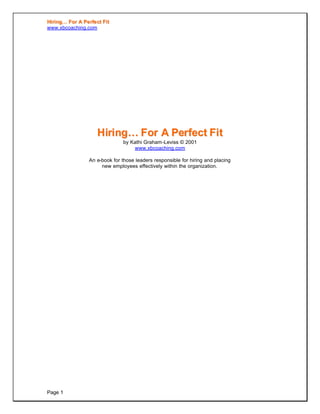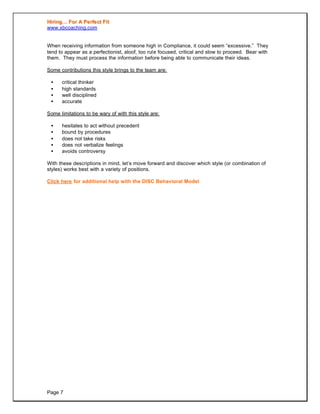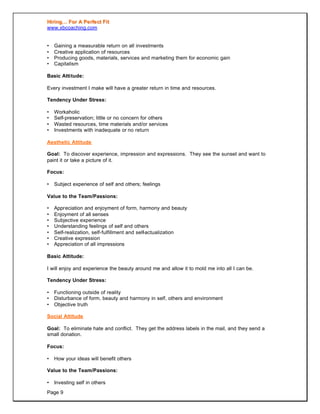This document provides an overview of a hiring guide that uses the DISC behavioral model and PIAV personality profile to identify the perfect job fit for candidates. It describes the four DISC styles - Dominance, Influence, Steadiness, and Compliance - and gives characteristics, communication tips, contributions and limitations for each. The guide contains chapters on hiring for various roles that provide a process and tools to hire talented candidates that match the organizational culture.


















